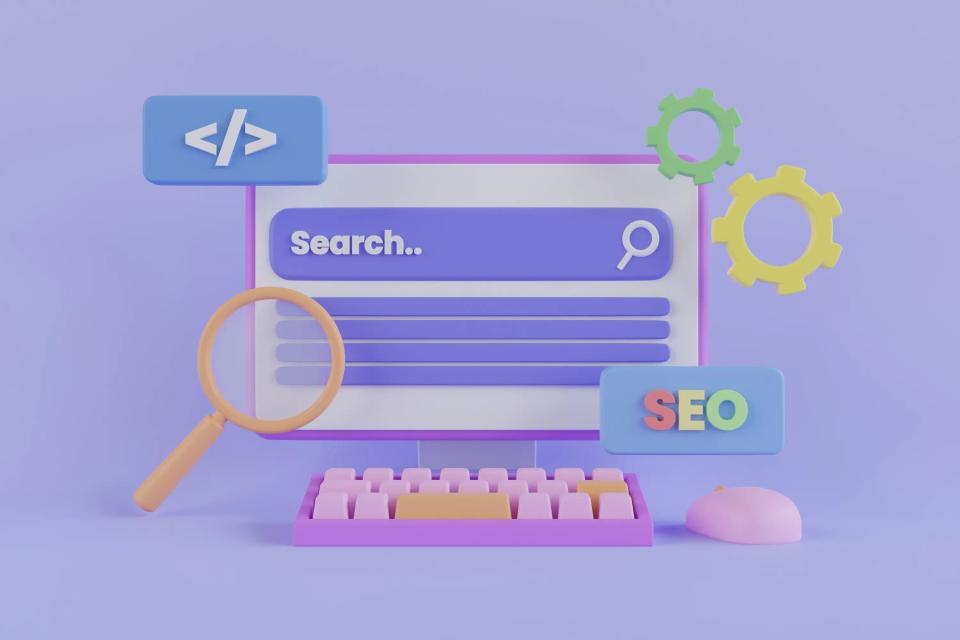Is your website bleeding users and cash because it’s agonizingly slow? Are you, as a developer, tired of pouring your heart and soul into features, only to see them ignored due to sluggish performance? You know the digital landscape is a battlefield, and speed is your sharpest weapon.
Basic tweaks and half-measures won't cut it anymore. To truly dominate, to make users love your site and Google reward it, you need the advanced arsenal. This isn't just about shaving milliseconds; it's about crafting experiences that captivate, convert, and conquer.
This guide is your roadmap. We're diving deep into the sophisticated technical optimization techniques that separate the amateurs from the pros. Prepare to transform your site into a performance powerhouse, ensuring survival, earning approval, and achieving digital dominance.
Core Web Vitals Optimization
Google's Core Web Vitals – Largest Contentful Paint, First Input Delay, and Cumulative Layout Shift – aren't just abstract metrics. They are Google’s direct measure of user experience, and your golden ticket to higher rankings and happier users. Ignore them, and you risk fading into digital obscurity; master them, and watch your traffic and conversions soar.
Largest Contentful Paint (LCP)
Tired of users staring at a blank screen, waiting for your main content to appear? LCP measures how quickly the most significant piece of content loads. Nail this, and you create an immediate sense of speed and reliability.
Advanced server-side optimization is your first line of attack. Your server holds the key to instant visual gratification; think faster database queries and optimized server response times. Google found that a 0.1-second improvement in LCP can increase conversion rates by up to 8%. Don't let a sluggish server steal your sales.
Next, embrace ruthless resource prioritization. Not all resources are created equal in the eyes of LCP. Tell the browser what's absolutely critical for that initial view, deferring non-essential CSS and JavaScript, and watch your LCP plummet. Optimizing the critical rendering path is like creating a VIP express lane for your most important content, ensuring it flashes onto the screen with breathtaking speed.
First Input Delay (FID)
Ever clicked a button on a webpage and… nothing happens? That frustrating lag is what First Input Delay measures. It’s the delay between a user's first interaction and the browser's response, and a high FID screams "broken" to your users.
Is rogue JavaScript choking your site's responsiveness, making interactions feel like wading through treacle? It's time to tame that beast. Optimizing JavaScript execution is paramount for a low FID, giving users the snappy, instant feedback they crave and deserve. According to web.dev, sites that improve FID can see a significant reduction in bounce rates for interactive elements.
The browser's main thread is your site's command center; if it's bogged down processing heavy JavaScript tasks, user interactions grind to a halt. Effective main thread management is crucial. Furthermore, don't force users to download an entire novel's worth of JavaScript when they only need a single sentence. Smart code splitting strategies deliver only what's necessary, when it's necessary, ensuring your site responds with lightning speed.
Cumulative Layout Shift (CLS)
Picture this: you’re about to tap a link, and suddenly, the layout shifts, causing you to click something entirely different. Infuriating, right? Cumulative Layout Shift quantifies this visual instability, and a high CLS can destroy user trust and send them fleeing.
Dynamic content, like ads or late-loading images without defined dimensions, are common culprits. You must handle this content intelligently, reserving space to prevent those jarring jumps. Advanced layout stability techniques are about building a rock-solid, predictable visual experience for your users. Google Search Central highlights that reducing CLS by just 0.1 can lead to a 15% increase in pageviews per session.
Resource loading optimization also plays a vital role. Ensure images have width and height attributes, and load fonts efficiently to prevent text from reflowing. Poorly loaded resources are prime instigators of layout chaos, so manage them meticulously to keep your CLS score near zero and your users happy.
Advanced Server-Side Optimization
Your server isn't just a passive box sitting in a data center; it's the thumping heart of your website's performance. Tune this engine like a Formula 1 race car, and you'll leave your competitors choking on your digital dust. True speed starts deep within your infrastructure.
Edge Computing Implementation
Why force your users' data to crawl across continents when it could be delivered from just around the corner? Edge computing is about bringing your services closer to the user, slashing latency and delivering an experience that feels instantaneous. This is how you gain a crucial speed advantage.
A well-configured Content Delivery Network (CDN) is foundational. CDNs cache your static assets in multiple geographical locations, serving users from the nearest point. Using a CDN can reduce latency by over 50% for global users, according to Cloudflare. But don't stop there; leverage edge workers and service workers to run custom logic directly on CDN edge servers, personalizing content or handling requests without a round trip to your origin.
Distributed computing strategies further enhance resilience and speed. By intelligently distributing your application's workload and data, you avoid single points of failure and ensure that even under heavy load, your site remains blazingly fast and reliably available. This isn't just about speed; it's about building an unshakeable digital fortress.
Database Optimization
Is your database the silent saboteur, strangling your application's performance with slow, inefficient queries? A sluggish database can bring even the most optimized frontend to its knees. It's time to unleash its true potential.
Relentless query optimization is non-negotiable. Hunt down those slow queries, analyze their execution plans, and rewrite them for maximum efficiency. Proper indexing strategies are equally critical; imagine searching a massive library without a catalog – that's your database without effective indexes. Microsoft documentation suggests properly configured indexes can speed up query retrieval by factors of 100x or more.
Smart caching implementation is like giving your database a much-needed vacation, preventing it from re-doing the same work repeatedly. For applications with massive datasets or extreme transaction volumes, database sharding – splitting your database into smaller, faster, more manageable pieces – can provide the scalability and speed you never thought possible. Don't let your database be the bottleneck that costs you users and revenue.
Advanced Frontend Performance Techniques
The frontend is where your digital creation meets its audience. This is the stage where performance is most palpable, where speed translates directly into user delight or utter frustration. Make it a breathtakingly fast experience, not a frustrating bottleneck that drives users away.
JavaScript Optimization
JavaScript is powerful, but unoptimized JavaScript is a performance vampire, sucking the life out of your load times and responsiveness. It's time to put your JavaScript on a strict diet and a rigorous training regimen. Every byte and every millisecond counts.
Tree shaking automatically removes dead, unused code from your bundles. Why ship code that does nothing but add bloat? Similarly, effective code splitting, as highlighted by web.dev, can reduce initial JavaScript payloads by as much as 70%. Deliver only the JavaScript users need for the current view, dramatically improving initial load times.
Lazy loading implementation for images, videos, and even JavaScript components defers their loading until they are actually needed, often when they scroll into view. This "just-in-time" delivery significantly improves perceived performance and reduces initial page weight. Finally, choose your module bundling strategy wisely; tools like Webpack, Rollup, or Parcel, when configured optimally, create lean, mean JavaScript machines ready to execute with blinding speed.
CSS Optimization
Think CSS is just about making things look pretty? Think again. Bloated, inefficient CSS can cripple rendering performance, leading to janky animations and slow page paints. It's time to sculpt your CSS into a lean, high-performance masterpiece.
Critical CSS extraction is a game-changer. By identifying and inlining the CSS needed to render above-the-fold content, you can make your site feel incredibly fast, as users see meaningful content almost instantly. Smashing Magazine notes that inline critical CSS can render content 1-2 seconds faster on slow connections. CSS containment is another powerful tool, allowing you to tell the browser which parts of your layout are independent, preventing costly rendering recalculations.
Adopting an advanced CSS architecture like BEM, SMACSS, or ITCSS prevents CSS bloat, improves maintainability, and makes collaboration a dream, not a nightmare. Furthermore, embrace performance-focused CSS methodologies from the outset. This means avoiding overly complex selectors, minimizing reflows and repaints, and understanding the performance cost of different CSS properties to ensure your styles enhance, not hinder, the user experience.
Advanced HTTP Optimization
The Hypertext Transfer Protocol (HTTP) is the invisible handshake that happens every time a browser requests your website. Optimizing this communication channel can transform it from a sluggish dial-up call into a fiber-optic superhighway. Don't let outdated protocols slow you down.
HTTP/3 Implementation
Are you still stuck on HTTP/2? It's time to leap into the future with HTTP/3. Built upon the QUIC protocol, HTTP/3 isn't just an incremental update; it's a revolution in web communication, designed for the modern internet's demands for speed and reliability.
The QUIC protocol, which underpins HTTP/3, offers significantly reduced latency, especially on unreliable networks, thanks to improved congestion control and faster connection establishment. Cloudflare reports that HTTP/3 can reduce page load time by up to 10-15% or more, particularly on networks prone to packet loss. This means a snappier experience for users on mobile or spotty Wi-Fi.
HTTP/3's multiplexing strategies are far superior, eliminating the head-of-line blocking that plagued earlier HTTP versions. It handles multiple requests and responses over a single connection like a seasoned air traffic controller, ensuring resources are delivered efficiently. Enhanced connection management, including zero round-trip time resumption (0-RTT), makes subsequent connections incredibly fast, further boosting perceived performance.
Resource Hints
Want to give the browser a crystal ball, allowing it to anticipate what your users will need next? Resource hints like preload, prefetch, and preconnect do exactly that, empowering you to tell the browser to fetch critical resources or establish connections before they are explicitly requested.
Use preload for resources essential for the current page that might be discovered late by the browser, such as fonts or critical JavaScript. Web.dev explains that proper use of preload can significantly improve LCP by ensuring these assets are loaded earlier, sometimes shaving over a second off load times. Prefetch is ideal for resources likely needed for future navigations, while preconnect warms up connections to critical third-party origins.
Don't just sprinkle these hints randomly; strategic resource prioritization is key. Focus on preloading assets that have the biggest impact on Core Web Vitals. Dive deeper with other browser hints like dns-prefetch to resolve domain names early or modulepreload for JavaScript modules. These subtle yet powerful optimizations add up to a noticeably faster, smoother experience that users will appreciate.
Security Optimization
A blazing-fast website is fantastic, but if it's vulnerable, you're building on quicksand. Advanced security optimization isn't just about protecting data; it's about building user trust, ensuring business continuity, and safeguarding your hard-earned reputation. Don't let attackers derail your performance gains.
Advanced Security Headers
Think of security headers as your website's digital bouncers, scrutinizing every request and response to keep out the riff-raff. Implementing a robust set of security headers is a critical layer of defense against a wide array of common web attacks. This is your first line of defense.
Content Security Policy (CSP) is your most powerful weapon against Cross-Site Scripting (XSS) and data injection attacks. By defining which resources the browser is allowed to load, you can drastically reduce your attack surface. OWASP states that a well-configured CSP can prevent the vast majority of XSS attacks. It demands careful implementation, but the security payoff is immense.
HTTP Strict Transport Security (HSTS) is another crucial header. It instructs browsers to only communicate with your site over HTTPS, eliminating the risk of man-in-the-middle attacks during insecure HTTP redirects. Bolster these with other headers like X-Content-Type-Options: nosniff, X-Frame-Options, and a strong Referrer-Policy to build multiple, overlapping layers of defense, making your site a much harder target for malicious actors.
SSL/TLS Optimization
Your SSL/TLS configuration is the bedrock of secure communication, encrypting data in transit between your users and your server. But not all SSL/TLS setups are created equal. Optimizing your configuration can enhance both security and performance.
Meticulous certificate management is paramount. Ensure your SSL certificates are always current, use strong key lengths, and obtain them from reputable Certificate Authorities. An expired or misconfigured certificate doesn't just throw up browser warnings; it erodes user trust and can bring your site to a screeching halt.
Enable the latest, most secure protocol versions, specifically TLS 1.3. Cloudflare highlights that TLS 1.3 offers a faster handshake (1-RTT) compared to TLS 1.2 (2-RTT), significantly reducing connection latency by up to 50% for the handshake itself. Finally, carefully configure your cipher suites, prioritizing strong, modern ciphers and disabling outdated, vulnerable ones. Leaving weak ciphers enabled is like leaving your digital front door unlocked.
Monitoring and Testing
You can't optimize what you don't measure. Gut feelings and guesswork have no place in advanced technical optimization. You need hard data, actionable insights, and a relentless commitment to testing to turn your website into a consistent performance leader.
Advanced Performance Monitoring
Are you truly seeing your website through your users' eyes? Advanced performance monitoring tools give you that crucial visibility, revealing how your site actually performs in the diverse and unpredictable conditions of the real world. This is where you uncover the hidden bottlenecks.
Real User Monitoring (RUM) is indispensable. It collects performance data directly from your actual users' browsers, providing insights into their true experience across different devices, networks, and geographic locations. Akamai suggests RUM can help identify performance bottlenecks affecting specific user segments that synthetic testing might miss, leading to targeted improvements.
Synthetic monitoring, on the other hand, involves running automated tests from consistent locations at regular intervals. This provides a stable baseline, helps you proactively catch regressions before users encounter them, and ensures uptime. Go beyond standard metrics by implementing custom metrics tracking that aligns with your specific application logic and business goals, giving you a truly tailored view of performance.
Testing Frameworks
Hope is not a strategy, especially when it comes to performance under load. Robust testing frameworks are essential to validate your optimizations, ensure scalability, and build confidence in your application's ability to handle success. Don't wait for a traffic spike to discover your limits.
Load testing tools like k6, JMeter, or LoadRunner allow you to simulate thousands or even millions of concurrent users, pushing your system to its limits to identify breaking points and performance degradation under stress. Can your site handle that viral marketing campaign or seasonal rush? Load testing provides the answer. According to DZone, automating performance tests can reduce the time spent on manual testing by up to 80%.
Integrate performance testing automation into your CI/CD pipeline. This ensures that every code change is automatically vetted for performance impact, preventing regressions from ever reaching production. This commitment to continuous performance monitoring – analyzing trends, setting alerts, and iteratively improving – transforms performance from a one-time project into an ongoing cultural value.
Future-Proofing Techniques
The web is a relentless river of innovation, constantly evolving. What's cutting-edge today might be standard tomorrow, and obsolete the day after. To maintain your performance edge, you must not only master current best practices but also anticipate and embrace the future.
Progressive Web Apps (PWA)
Why limit your web application to the confines of a browser tab? Progressive Web Apps (PWAs) bridge the gap between web and native applications, offering rich, app-like experiences directly through the browser, complete with offline capabilities and push notifications. This is how you deliver next-level engagement.
Service worker strategies are the beating heart of PWAs. These JavaScript files run in the background, intercepting network requests and enabling powerful features like intelligent caching for offline functionality. Imagine your users still being able to access critical content or complete tasks even when their internet connection drops – that’s the power of PWAs. Google Developers report that PWAs can increase user engagement by up to 4x and have shown conversion rate increases of over 50% for some businesses.
Optimized push notifications allow you to re-engage users effectively, bringing them back to your application with timely and relevant updates, without the intrusiveness of other channels. By building a PWA, you're not just improving performance; you're creating a more resilient, engaging, and accessible experience that works seamlessly across all devices.
Emerging Technologies
The horizon of web development is always shimmering with new possibilities. Staying curious, experimenting with emerging technologies, and strategically adopting new web standards can give you a significant competitive advantage and ensure your applications are built for tomorrow's challenges.
WebAssembly (Wasm) is a game-changer for performance-critical applications. It allows you to run code written in languages like C++, Rust, or Go directly in the browser at near-native speed, perfect for complex calculations, gaming, or video editing. Mozilla research indicates WebAssembly can execute code significantly faster than JavaScript for CPU-intensive tasks, unlocking new potentials for web applications.
Keep a keen eye on API optimization trends, such as the adoption of GraphQL for more efficient data fetching or gRPC for high-performance microservices communication. Continuously explore and adopt new web standards as they mature – technologies like WebTransport for low-latency bidirectional communication or advanced CSS capabilities via Houdini can provide unique performance benefits. The future belongs to those who build it.
Conclusion
You now possess an arsenal of advanced technical optimization techniques. From meticulously tuning Core Web Vitals and supercharging your server to refining frontend delivery and fortifying security, you are equipped to sculpt web experiences that are not just fast, but truly exceptional. This knowledge is your power.
Don't let this wealth of information overwhelm you. The journey to peak performance is iterative. Start by identifying your biggest pain points and tackling the optimizations that promise the most significant wins for your specific context. Implement, measure rigorously, analyze the impact, and then iterate.
The power to create blazing-fast, user-delighting, and Google-loving websites is now firmly in your hands. Embrace these strategies, commit to continuous improvement, and watch as your applications soar to new heights of success. Go forth and optimize!
Technical Resources
To aid you on your optimization journey, here are some invaluable resources:
- Recommended Tools:
- Documentation References:
- Community Resources:
- Further Reading:













